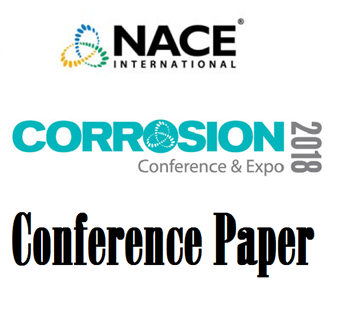There are a variety of brines available for use as completion workover suspension and packer fluids at low to moderate temperatures and low to moderate pressures. Higher pressures require higher density completion brines often above 2.0 s.g (16.7 ppg). At the moment there are only two high density brines that are commercially available and in use in the oilfield. These are zinc bromide (ZnBr2) and cesium formate (CsCOOH). Zinc bromide with a pH of about 2 is very corrosive and is a safety hazard on the rig. It is a priority pollutant that is no longer used in the North Sea. Cesium formate a slightly alkaline environmentally acceptable brine is naturally less corrosive and has been successfully used as a drilling completion and suspension fluid in HPHT well construction operations over the past 16 years. The cesium formate brines have been exposed in the field to temperatures up to 235°C (455°F) for 6 months and 180°C (356°F) for 24 months and today they are the preferred HPHT completion fluids in the North Sea.As the industry is moving towards higher temperatures and higher pressures (XHPHT) both the suitability of the completion materials and the well construction fluids are challenged. One of the weaknesses of zinc bromide brine is that it is normally used with the addition of a thiocyanate-based corrosion inhibitor that decomposes to H2S at moderate temperatures. The formate ion in the cesium formate brine is an organic ion that over time and under certain high-temperature conditions can decompose and evolve hydrogen gas. Despite the very good field experience with cesium formate brine under HPHT conditions there has been expressed concern about deploying this brine in XHPHT wells.To address this concern cesium acetate has been developed as an alternative XHPHT well construction brine. Cesium acetate has the same beneficial properties as cesium formate in that it is slightly alkaline compatible with carbonate/bicarbonate pH buffer and it does not contain halide ions one of the main contributors to pitting and SCC. Compared with the formate ion the acetate ion is stable to much higher temperatures.To qualify cesium acetate for use in XHPHT completion workover suspension and packer fluid applications an extensive corrosion test program has been carried out over the past 3 years. A range of martensitic duplex and austenitic alloys have been exposed to the brine for periods up to 6 months with and without the presence of acid reservoir gases and at temperatures up to 232°C (450°F). The tests indicate that cesium acetate does not promote any of the common HPHT corrosion problems such as stress corrosion cracking (SCC) and hydrogen charging of duplex and austenitic alloys. The paper concludes that on the basis of corrosion testing undertaken so far cesium acetate may prove to be a very effective well construction fluid for XHPHT wells.KeywordsMartensitic stainless steel 13Cr cesium acetate caesium acetate HPHT XHPHT stress corrosion cracking SCC completion fluid packer fluid.




